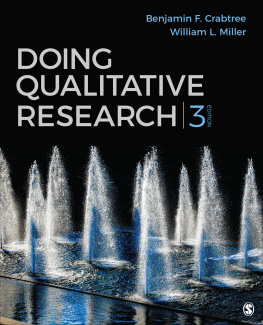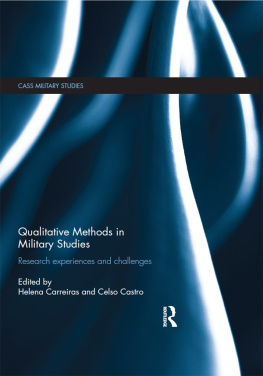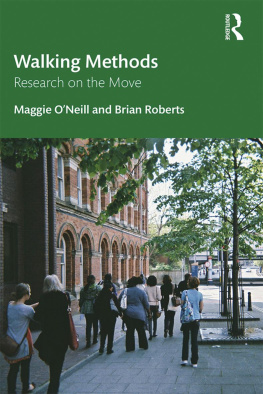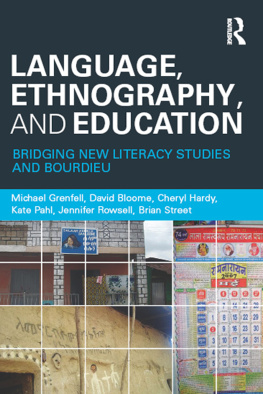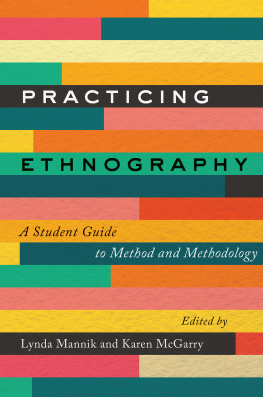1. Introduction: Photo Methods, the Image, and Validity
Abstract
Although the two have distinct origins, photography and ethnography are linked in history and practice. The technology and application of photography as documenter and driver of society has created a convergence of culture and image not possible in former ages, and Yet in social science, the image has been slow to gain acceptance as a tool for data collection and dissemination. This introduction describes the origins and mechanisms of this powerful union and explains how the use of images in ethnographic work enhances validity. The chapters herein are testaments to the power of using images in ethnographic research as more than a mere mechanism for deeper data collection, but also as an empowering experience for participants.
Michael L. Boucher, Jr.
Assistant Professor of Curriculum and Instruction at Texas State University. Dr. Boucher received his Ph.D. from Indiana University after his work as an urban high school teacher and teacher-leader in Minneapolis, MN. Using photo methods in ethnographic case studies, his research investigates the pedagogy and practice of White teachers working in solidarity with students of color in segregated education systems. He teaches research methods, instructional methods, diversity, and adolescent development to graduate students.
The great landscape photographer, Ansel Adams (19021984) said , When words become unclear, I shall focus with photographs . When images become inadequate, I shall be content with silence (Oden, ). When a relationship is official, it is posted on social media. The phrase, Photos, or it didnt happen is a maxim for many youth in our society. When the words become unclear, we can turn to pictures and share what words cannot.
In our research, whatever form of ethnography we use, our work is focused on human beings in all their messy, conflicted, illogical, and ideological selves. We use culture as a mechanism to understand people and all the ways that individuals are empowered and oppressed by the larger society. Social scientists occupy the space at this intersection of the individuals incongruence and the cultures frameworks of identities and behaviors. Exploring that space is our raison dtre and images have become an important method to understand people and their culture (Fay, ).
This volume is a collaborative work meant to give scholars and students a working knowledge of the procedures, challenges, and benefits of using photo methods in their ethnographic work using studies by current researchers. The chapters herein assert that the use of images can empower participants to challenge their own realities and examine their participation in structures of power . The studies are both examples of exemplary scholarship and serve as tutorials on the procedures and methodological considerations of using this personal, even intimate, method. Although these chapters come from existing studies that used photo methods, they are not reprints of previously published work. These eight authors were asked to re-open their carefully packed-away studies, disassemble the methods and the findings, and reflect on the contents. Like looking through old photo albums, these reflective essays allowed us to have new conversations with different audiences. To that end, each chapter contains sections that penetratingly explain the research problem, describe why photo methods were used for the study, elucidate and reflect on the method, summarize the findings, and then examine participant empowerment through the method. This unique structure is specifically designed to be used in masters and doctoral classrooms and with researchers looking for new methods or to strengthen their existing work. Each researcher brings positionality and purpose to their investigation and approaches these methods differently. Collectively, we believe that using photo-methods can empower participants to become part of the research process, but we have endeavored to trouble that notion within the various chapters and the conclusion. That said, there are many commonalities in these studies in that each of us uses photo with the same goal; to create rigorous science that has meaning for our participants.
Despite the phenomenological nature of photographs, as qualitative researchers we recognize that knowledge is constructed from a mix of what we are taught and what we experience (Fetterman, ). Thus, historicizing a phenomenon allows for reflection on origins, purposes and motivations. In the next section, we call upon the historical record to inform our research and give context to our work. We stand not on our own, but in front of a long line of scholars who traveled to the all parts of the earth to gain knowledge that we use to explore further. However, the historical record also reveals that sometimes the best understandings come from those who stayed home.
1.1 Historical Context
The history of ethnographic research has its roots in the nineteenth century practice of crafting narratives of peoples designated as non - White as objects of curiosity, and later, scientific study (Becker, ), Powell :
had both practical and idealistic motives: he wished to improve communication with the tribes; but he also wanted to better understand their world, to classify their languages and delineate their cultures . Most importantly, he believed only a scientifically-based ethnology could displace the misconceptions that were causing so much bitterness and bloodshed on both sides.
(voices.nationalgeographic.com)
While Powell was largely unsuccessful in his quest to bring understanding to both sides, the Smithsonian Institution funded many expeditions into what was termed, Indian Territory. Consequently, the Institution has an extensive collection of portraits of Native peoples based on Powells work and others. Whether that was for good or ill, is a matter of debate (see Conn, ).
Inspired by Enlightenment thinking, anthropologists labored to find the cultural thread that linked all peoples together. To that end, they lived with peoples conquered by colonial governments and illustrated their experiences. In his foundational ethnography, The Algerians (1962), Pierre Bourdieu attempts to explain his participants connection to the land:
The bond which unites the fellah [Egyptian term for non-landowner, or peasant] to his land is mystical rather than utilitarian. He belongs to his fields much more than his fields belong to him. He is attached to his land by deeply affective ties, as witness the agrarian rites in which is expressed a sentiment of dependency in regard to this land, which cannot be treated as a mere raw material but rather as a foster-mother whose authority must be obeyed, since, in the final analysis, it is on her benevolence or ill-will; much more than on human effort, that wealth or poverty depend. (p. 103)
Like many of his contemporaries, Bourdieu imbued his participants with exoticism as described by Edward Said in his work, Orientalism (1979). Said explained that this type of otherization allows colonizers to separate themselves from the colonized. The mental gymnastics of appreciation and distain for the people under colonial rule allows colonialists to maintain that they are culturally superior, but sensitive to the plight of the colonized. In Bourdieu, as with other ethnographies of the time, European supremacy was the unquestioned assumption in the portrayal of non-Europeans (Ramzy, , p. 150) . Bourdieus description of Islamic culture and religious practice is steeped in the kind of exoticism Said described. Bourdieu wrote:


